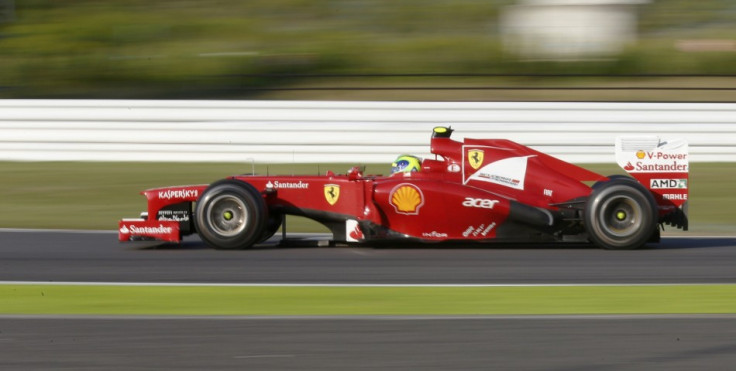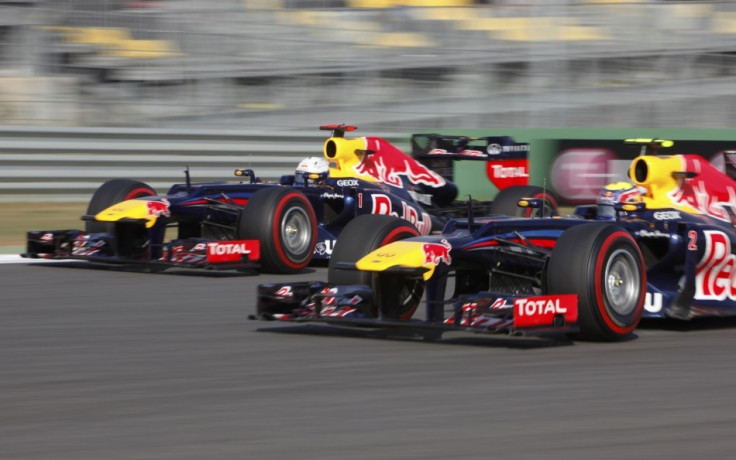F1 US Grand Prix 2012 Preview: Formula 1 Returns to America, Introduction to Circuit of Americas
Formula 1 returns to the United States and the sport's chief, Bernie Ecclestone, will be hoping for as controversy-free a race weekend as he can possibly manage. The last time the high-profile sport was in America, in 2007, the drivers raced around a modified Indianapolis circuit, with McLaren's Lewis Hamilton leading Fernando Alonso (who was then with the Woking team) home for a one-two finish. The Ferraris of Felipe Massa and Kimi Raikkonen came home third and fourth and Nick Heidfeld finished fifth in the BMW Sauber.

However, the most famous United States Formula 1 Grand Prix was the debacle of 2005. Back then, there were two tyre suppliers - Bridgestone and Michelin. Unfortunately, as it panned out the French company were forced to advise teams running their tyres (including the McLarens and the Renault, for a total of 14 drivers) to withdraw, after concerns over tyre safety and a failure to reach a compromise with the FIA.
The result - an absolute walkover for the two Ferraris. Seven time world champion Michael Schumacher won, unchallenged by any of the other cars, and his team mate Rubens Barrichello finished second; the pair finished one lap ahead of the Jordan-Toyota and Minardi-Cosworth teams. The result, also, was a massive public relations disaster for Formula 1 in the US and although the existing contract for two more races was fulfilled (with no other disastrous moments) from 2008, the US Grand Prix was dropped.
But now it's back... in Austin, Texas. And this weekend, championship hopefuls Sebastian Vettel, Alonso, Red Bull, McLaren and Ferrari will duly inaugurate the Circuit of The Americas, a 5.513km 20-corner high-speed purpose-built Formula 1 venue, with an estimated top speed of 350km/h and a project cost of nearly £200m.
A Flying Lap
A new circuit is always a tricky proposition. Most of all because none of the drivers have any clue about how fast the corners will be, where the braking points are, if the track surface is bumpy or smooth or if cross-winds will be a problem... there are so many factors to consider.
As a rule, before each race, the drivers do a walk-around. That is, they actually walk the five-odd kilometres of every circuit, trying to gather as much first-hand information as possible, before strapping into their cars. That walk-around is likely to be a critical aspect of getting to know the Circuit of the Americas.

"Going to a new track always presents a new set of challenges as we rely heavily on simulations conducted in the dyno and on various computer modelling software," Remi Taffin, Renault Sport F1's head of track operations, explained, adding, "The accuracy of the models is such that we can gauge starting gear ratios, fuel consumption over one lap and a basic torque map, but nuances such as the kerbing, the abrasiveness and the undulations of the track will all need to be assessed on site."
For a brief and theoretical understanding, though, we begin in Sector One, off the start-finish straight, with the first corner... a very tight hairpin leading into a flowing right-hander and onto a sequence of fast left-right bends reminiscent of the Becketts complex at Silverstone or the Esses at Suzuka. Sector One finishes just as the driver exits the above sequence of turns, at Turn 6. The important point coming of Turn One is to maximise speed through these turns because like Becketts and the Esses, line and speed through these corners is likely to be critical, not just for immediate time gain but also through Turns Six, Seven, Eight and Nine and round Turn 10 on to the second of the two straights. However, before that happens, there is Turn 11 to negotiate - a super-tight and slow left-handed hairpin, similar to Turn One. All in all, engineers expect an average speed of more than 200km/h through Sector One.

The straight that finishes Sector Two is one of the longest straights on the calendar, at just over a kilometre long, so expect cars to touch the 350km/h barrier as they approach Turn 12. This is a very tight left-hander that will demand an perfectly-taken apex because it leads into Sector Three, which is likely to be the hardest of the three sectors and the one where drivers will gain or lose time.
On paper, the final sector reminds one of the stadium sections at Hockenheim (the German Grand Prix) or Silverstone. The section begins with a short burst of speed into a double right-hander, followed immediately by a double left-hander. This will be a critical sequence because it requires the cars and drivers to balance and shift weight from one side to another, without losing speed or traction. The last major challenge will be a long Turn 17, not unlike the now infamous Turn Eight at the Istanbul circuit.
There is one final concern for the engineers - gradation change.
"What you can't see from the track map is that there is a lot of undulation change over the lap, very similar to India," Taffin added, "This will put an extra strain on the engine internals as the lubricants rise and fall within the systems over the crests and dips."
© Copyright IBTimes 2025. All rights reserved.




















